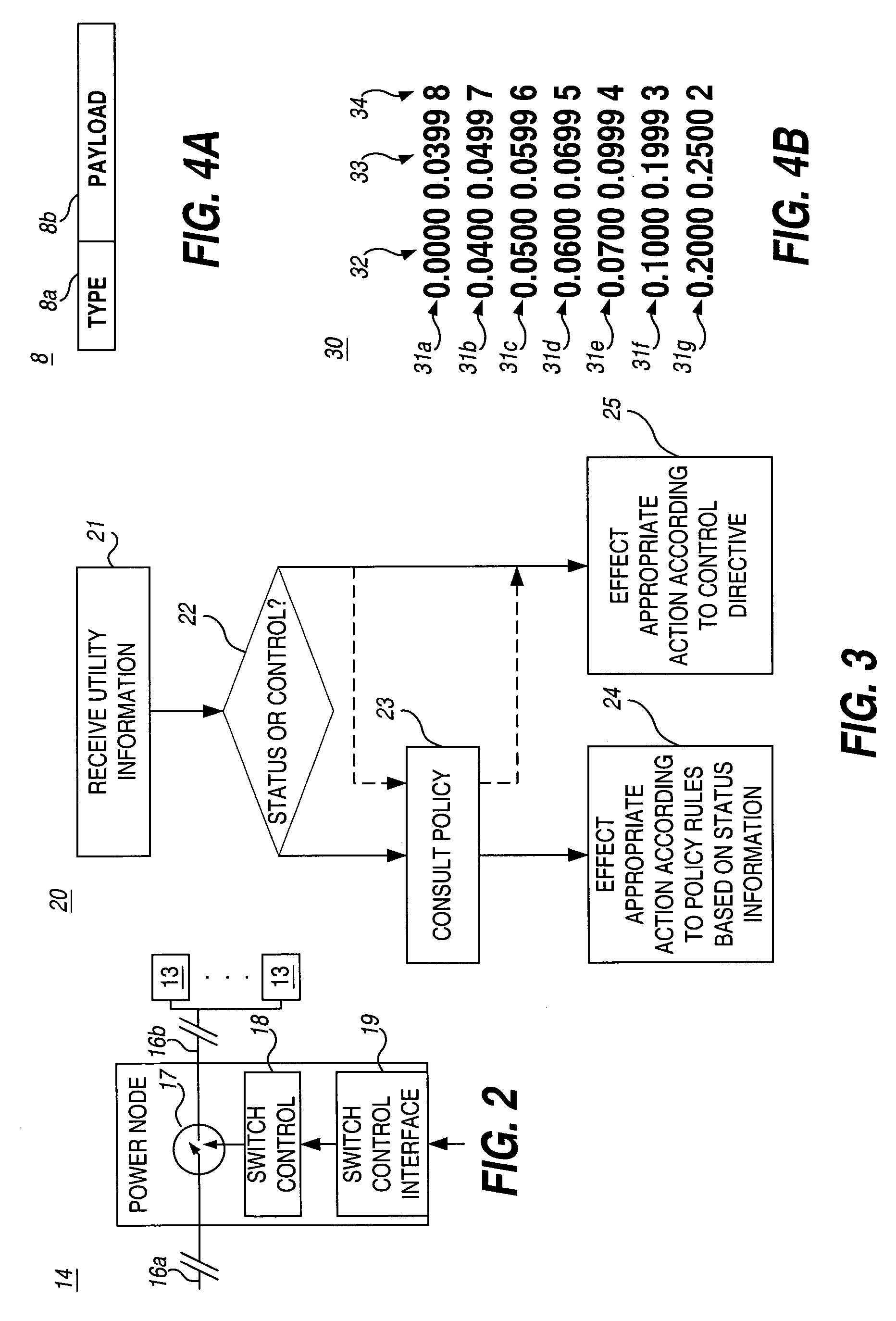Dynamic control system for power sub-network
a technology of dynamic control system and power subnetwork, which is applied in the direction of process and machine control, data switching network, instruments, etc., can solve the problems of increasing resistiveness, reducing the voltage at the location of consumers, and limiting the current being carried over the transmission line, so as to optimize the electricity consumption of consumers and reduce the consumption of electricity. , the effect of reducing the electrical load
- Summary
- Abstract
- Description
- Claims
- Application Information
AI Technical Summary
Benefits of technology
Problems solved by technology
Method used
Image
Examples
Embodiment Construction
1. General Embodiment
[0044]Turning now to the drawings, FIG. 1 is a block diagram of a system 1 that utilizes a dynamic power control system 10 in accordance with the invention. In this system 1, a power grid 2 is serviced by a utility company 3. The utility company 3 provides electrical service 4a–4n to a plurality of entities (not shown) through an electrical service unit. More particularly, the utility company 3 supplies power 7 over regional and local power lines 6 up to and including the electrical service units 4a–4n (typically implemented by way of an electrical service meter 5). A power sub-network 10 distributes power beyond the electrical service unit over a sub-network of power lines 16 (e.g., premises wiring). The use of power within the power sub-network 16 can be dynamically controlled using the dynamic power control system 10 of the invention.
[0045]Implementation of the dynamic power control system 10 of the invention requires utility information 8 generated by the ut...
PUM
 Login to View More
Login to View More Abstract
Description
Claims
Application Information
 Login to View More
Login to View More - R&D
- Intellectual Property
- Life Sciences
- Materials
- Tech Scout
- Unparalleled Data Quality
- Higher Quality Content
- 60% Fewer Hallucinations
Browse by: Latest US Patents, China's latest patents, Technical Efficacy Thesaurus, Application Domain, Technology Topic, Popular Technical Reports.
© 2025 PatSnap. All rights reserved.Legal|Privacy policy|Modern Slavery Act Transparency Statement|Sitemap|About US| Contact US: help@patsnap.com



